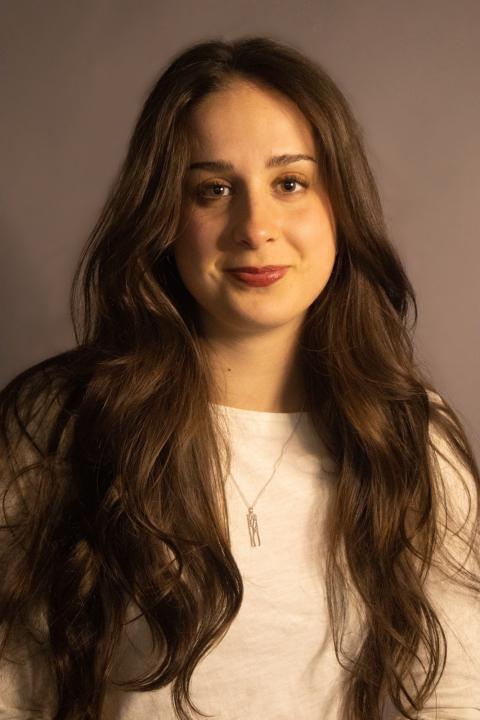
I spent this past year conducting research for my honors thesis on the way Spain frames its Islamic heritage. I worked closely with Professor Ethel Sara Wolper in the history department on this project; she helped me organize my thoughts, develop a clear question and argument, and formulate my research into straightforward analytical writing. At the end of the year, I presented at UNH’s Undergraduate Research Conference (URC) for both the History Department Panel and the All Colleges Undergraduate Symposium. I was honored to win an Award of Excellence for my presentation.
From Paper to Powerpoint
The URC presentations took place towards the end of April, by which time I had finished the bulk of my thesis writing. Since my finished thesis clocked in at 48 pages, my first task was to condense my presentation material to meet the time slot for each session. Following the advice of my professors and advisors, I focused on a few specific parts of my research, allotting one slide to each of them.
I introduced the mid nineteenth-century academic theory of convivencia, which states that medieval Spain is exceptional among other European countries of its time for its religious harmony between Christians, Muslims, and Jews. I explained that theory has since come to be regarded as oversimplified by many prolific medieval scholars, although it remains prominent in twenty-first century Spain’s tourism industry. Then, I segued into the research question I chose to focus on for this presentation: Why does Spain’s tourism industry continue to highlight the idea of convivencia when it has been disavowed in many academic circles? I discussed two different tourism sites, the Mosque-Cathedral of Córdoba and the Albayzín of Granada, two sites whose histories are held up as the epitome of tolerance. I looked beyond the idealized version of history that the convivencia theory suggests, towards the ironic discriminatory reality of the sites whose history is held up as the epitome of tolerance. Choosing these specific aspects narrowed the scope of the presentation which helped bring clarity to this complex topic. This core information, along with a brief explanation of my research question and its significance, comprised the majority of the presentation.
My remaining time was spent sharing a noteworthy Andalusian legend that gives new life to old historical tensions. I originally heard this story from my Spanish professor during the spring of 2022 while I studied abroad in Granada, when she led my class on a tour of the Alhambra, the city’s famed Islamic palace. She told us that one day, an earthquake would cause the engraved hand on the palace’s outermost arch to reach down and grab the key depicted on the inner arch. The hand would then use the key to unlock an underground city, awakening the Muslims buried there, who would reconquer the historic site. Reminiscent of the divisions seen during the Reconquista, this legend exemplifies Spain’s complicated relationship with its Islamic past and served as an accessible entrypoint for an audience with little previous exposure to this history.
From Practice to Presentation
Once I had my presentation set, I jumped at every opportunity to practice in front of new audiences. Presenting to friends and family was valuable because they, like my URC audience, did not have a background in Spanish history, and were able to provide candid feedback. I presented to other students at UNH and faculty as well. Professor Wolper invited me to present to her honors class and I also presented in my international affairs capstone course. Both experiences gave me the chance to refine my script and visuals based on constructive feedback.
I presented on two separate days of the URC. Both took place in a small meeting room in the Memorial Union and Student Activities building in front of an audience of parents, friends, and faculty. My first session was the History Panel, “Smashing History.” Each of the presentations during this session told previously-heard stories in a new light. My second session was the All College Symposium, where the presentations spanned many complex issues in international affairs.
In my opinion, the most challenging part of the URC was taking audience questions. Unlike the presentation, where practicing repeatedly gave me a sense of control and confidence, I did not know what to expect from the audience. The questions I received were thought provoking and allowed me to delve deeper into my topic than I previously expected. Responding in a concise, but informative manner was difficult, yet rewarding.
Sharing my work with a broad audience at the URC was truly an honor. My experience presenting this important topic has given me a renewed sense of confidence as I prepare for my graduate journey in the fall. I look forward to further exploring the field of Islamic studies and will also pursue publication of my thesis in an undergraduate or history journal.
